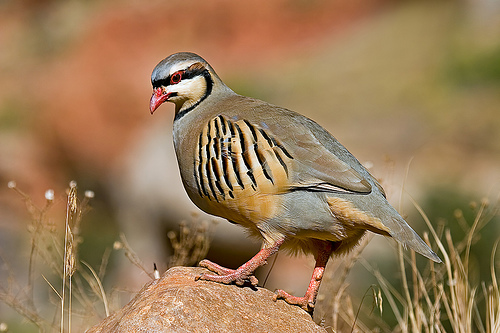Interactions with Other Species
Many have adapted well to extensive agriculture and have
become common in farmlands in
 both North America and Europe.
There, they commonly interact with cows,
goats, chickens,
donkeys,
pigs, and other farm animals.
However, in Europe, modern farming both North America and Europe.
There, they commonly interact with cows,
goats, chickens,
donkeys,
pigs, and other farm animals.
However, in Europe, modern farming practices with the use
of pesticides and herbicides have caused a steady decline in the
number of
chukar partridges in recent years. practices with the use
of pesticides and herbicides have caused a steady decline in the
number of
chukar partridges in recent years.
Other organisms that share in this grassland habitat include
coyotes, sage-grouse, and mosquitoes carrying
West Nile Virus (WNV). Therefore, chukars are
occasionally hosts to WNV. Once infected, they develop
viremia which means that the virus is now present in their blood
and ready for more mosquitoes to come and pick up with this
virus and pass it on.
When it comes to chukars in the food chain, they aren’t
highly sought after by many predatory animals. Though they may be chosen
for a meal here and there by a fox, they aren’t the first choice. These
predators find other, more appealing animals as their main food source.
The only consistent predators they have are
humans. When the chukar was originally introduced in
California in 1932, it was meant for hunting. Their
quality meat yields close to sixteen ounces of the best
all-white meat on the market. Hunters call them the most
“sporty” and a difficult high ground game bird to bag.
|